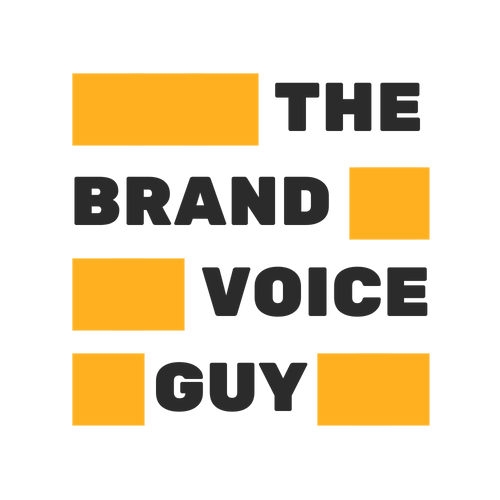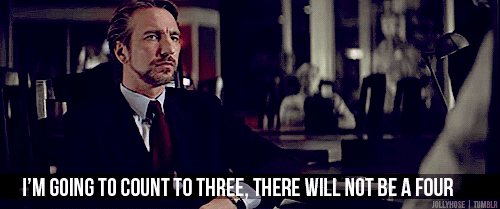3 things Die Hard teach you about writing for your brand.

Hey! I'm Jack, a copywriter that specialises in helping rad brands find their voice and use words to sell more stuff.
Thanks for checking out my stuff! 🤘
(And if you need words, don't be afraid to say hello!)
Warning: this posts takes Die Hard far too seriously.
The other night I was watching The Greatest Action Movie of All Time, and I realised that it isn’t just a film about stopping thieves, saving Christmas and Alan Rickman chewing the scenery to pieces…
It also contains some fantastic lessons for building a brand with a tribe of die hard fans.
No, seriously.
(Well, half seriously.)
But rather than listing them all, I’m going to limit this article to 3 of them.
Why?
Because it’s how Hans would have wanted it.
Tip 1: Differentiate and stand out from the crowd
You might not know that, despite his post-Die Hard career trajectory, ol’ Brucey wasn’t the first choice for the role of John McClane.
The studio originally wanted tried-and-tested action stars like Arnie or Sylvester Stallone to play the role.
Side note: Can you imagine how different the film would be with Arnie saying “welcaaaahmmm to tha pahhhty pahhhl” or Sylvester Stallone mumbling his way through “Come out to the coast! We’ll get together, have a few laughs.”
At the time, Bruce was primarily a comedic actor, not an action star.
And that’s one of the main reasons Die Hard works so well.
Bruce isn’t a steroided-up, muscle-bound killing machine, he’s an ordinary man in an extraordinary situation. His everyman humour and vulnerability is a breath of fresh air from the testosterone-fuelled romps of the 80s.
And the film is all the better for it.
And here comes the first of the three marketing lessons I’m strong-arming into this love letter to Die Hard:
Your market is already dominated by your Arnies and your Sly Stallones. Be more Bruce.
Even if you’re selling a product or service that is similar to your competitors or market leaders, you don’t need to try and be them. (Or worse, a poor imitation of them.)
Own what makes your brand different, unique and special. Don’t hide it or run from it. Lean into it.
Remember, on paper, Die Hard is an action film by the writer of Commando and The Running Man and the director of Predator. It should be just another 80s action film.
But it isn’t. It’s its own film. It has its own character and voice and it’s all the better for leaning into those things.
And the proof of that is the four Die Hard sequels.
If you watch Die Hard 2–5 (do yourself a favour and skip Die Hard 5), you’ll see a perfect example of what happens if you lose sight of what makes your brand special.
In the original Die Hard, they had a unique hero. He had his own voice, his own sense of humour and his own take on the action.
And he was relatable and real. He was losing his hair, he wasn’t jacked up and he was afraid of flying (more on that later).
By Die Hard 5 (*shudders*), John is just a generic, gun-toting action movie character. And each successive film is all the worse for losing sight of what made the original so great, so different and so memorable.
If your brand has the courage to develop — and stick to — its own voice and personality, you’ll attract a tonne of fans that are drawn to your personality AND who will remember you because you broke the mould.
In behavioural science, this is called the von Restorff Effect; we remember the things that are different.
(And if you’ve ever read anything by me, you’ll already know that because I can’t go more than 500 words without mentioning it…)
Takeaway: Be more Bruce. Own what makes you different and don’t blend in with the crowd.
Tip 2, Tip Harder: Give your customers a chance to get to know your brand, warts and all
John isn’t your typical action hero. We’ve already established that.
But one of the ways Die Hard is really interesting is demonstrated in this scene:
What other action movie has the hero scared they’re going to die and crying about the choices they’ve made in their personal life?
More specifically, which other 80s action movie does this?
Die Hard is a film that opens on our hero being anxious about flying. In fact, he spends the whole film without shoes because he is trying to get over his fear of flying.
John is vulnerable. And because of that vulnerability and imperfection, we identify with him.
Your customers (and soon-to-be-customers) are exactly the same.
As humans, we naturally distrust things that are perfect.
When you see product with 1,000 5-star reviews on Amazon and no 1, 2, 3 or 4-star reviews, what do you think? Fake.
When you see somebody on Instagram living at the beach with no job and no bad days, what do you think? Suspicious.
When a brand is always super polished, what do you think? Inauthentic.
In behavioural science, this also has a name: The Pratfall Effect.
When we demonstrate a flaw, we become more likeable and human. Likewise, being too perfect makes you untrustworthy.
As The Guardian point out:
Three of the most successful ad campaigns ever: “Good things come to those who wait” (Guinness), “Reassuringly expensive” (Stella Artois) and “Naughty but nice” (Lyons cream cakes) all made their core claim more believable by admitting a weakness.
But this is something that lots of brands forget about.
Caught up in the idea of needing to sell and be perfect, we often forget to let our customers see the sides of our brand and our personalities that aren’t so perfect, but are more real.
Of course, I’m not saying broadcast all the behind-the-scenes slip-ups and in-house spats (“Becky drank the last of the milk and didn’t replace it…”), but acknowledging that you’re not always perfect and being more real, honest and relatable is crucial for any brands looking to build trust.
Just look at Oatly, Slack, Drift, Innocent, Brewdog, Monzo, Virgin, KFC (specifically that FCK ad)…
They all embrace their flaws and imperfections — AKA the things that make them human — and roll them up as integral parts of their brand voices.
And they are all the better for it.
Takeaway: Don’t feel pressured to only publish 5-star reviews or the great stuff people say about your brand. Don’t feel pressured to always have polished messaging. Being constantly real and authentic (with a few slip ups or faults) is 10x better than being a Slick Rick.
Tip with a Vengeance: Speaking your customers’ language
There’s a scene in Die Hard where John gets on the radio and speaks to Al, a police officer outside the Nakatomi Plaza.
After the call, Al is chatting to his superiors and he says:
Sergeant Al Powell: In fact, I think he’s a cop. Maybe not LAPD, but he’s definitely a badge.
Superior Officer: How do you know that?
Sergeant Al Powell: A hunch, things he said. Like being able to spot a phony ID.
In that scene, John doesn’t say he’s a cop, but Al just knows because of the way he speaks.
Your audience is the same.
They’ll be able to tell if you’re the brand for them just from the language you use and the way you speak.
In 2013, Professors John Bryden, Sebastien Funk (winner of today’s awesome name award) and Vincent Jansen discovered that different groups on social media have developed their own languages.⠀
⠀
In fact, Professor Jansen said that ‘just as people have varying regional accents, [they] also found that communities would misspell words in different ways.”
(Justin Bieber fans like to end words in ‘ee’ like ‘pleasee’. The more you know…)
You’ve probably noticed this in your personal life without clocking it.
Among your closest friends, you’ve probably got some odd inflections, some niche in-jokes and a language that makes it difficult for outsiders to integrate immediately. ⠀
Now, imagine two new people join your circle. One is great but doesn’t quite gel or pick up on the nuances of the way your group communicate, the other gets the nuances, understands the references and gels straight away.⠀
⠀
Which one are you going to *want* to hang with again? ⠀
It’s the same with the way your brand talks. You can either be the brand that’s great but not quite right OR you can be the brand that your tribe loves.⠀
Your customers have their own language and knowing how to speak it lets you make an instant connection that says ‘we get you’.
You’ll be remembered as the one they want to hang with again rather than the ‘oh yeah, they were pretty nice’ brand.
But how can you learn your customers’ language?
Just get to know them. Watch how they talk online, look at the language they use in DMs and emails and in comments, find out where they hang out online and observe how they talk there…⠀
⠀
You’ll pick up on those little nuances soon enough.
Then, weave them into your copy in a genuine, authentic way and you’ll go from ‘hmm, they’re OK’ to ‘HOLY SHIT! They’re the brand for me!’ very quickly.
Or, put another way, your Als will know you’re a cop, without you having to tell them.
Takeaway: speak your customers’ language. Don’t mimic them or force words that aren’t right for your brand, but make sure your brand’s language is in harmony with the way your audience think and speak.
Brands, bubbe…

In many ways, John McClane is the walking embodiment of how awesome brands build audiences of die hard fans. (Sorry, I couldn’t resist.)
He might be in a typical 80s action film, but his constant comments and monologuing about what’s happening creates a connection with the viewer, just like your brand voice does with your audience.
He also breaks the mould. He doesn’t try to be like other heroes (both in the film and in the meta sense). And because of this, he’s memorable, just like a good brand should be.
And, of course, he’s wholly authentic to himself. Again, just like a good brand should be.
So next time you’re bored of reading through another 13 Top Tips for Creating a Standout Brand post, just grab a beer and kick back with The Greatest Action Movie of All Time.
(But again, and I can’t stress this enough, DO NOT watch number 5.)
Pinch THE EXACT PROCESS I USE TO DEVELOP brand voices. 👇
Sign up here, you legend. 👇


